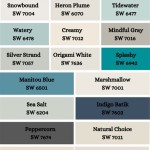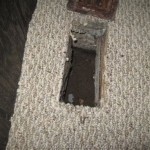What R-Value For Basement Walls?
The R-value of a material is a measure of its resistance to heat flow. The higher the R-value, the better the material insulates. For basement walls, an R-value of 10 to 15 is typically recommended. This level of insulation will help to keep your basement warm in the winter and cool in the summer, and it will also help to reduce your energy bills.
There are a number of different ways to insulate basement walls. One common method is to install rigid foam insulation boards directly to the walls. These boards are available in a variety of thicknesses, so you can choose the R-value that is right for your needs. Another option is to spray foam insulation onto the walls. This type of insulation is applied as a liquid, and it expands to fill all of the gaps and crevices in the walls. Spray foam insulation has a higher R-value than rigid foam insulation, but it is also more expensive.
If you are insulating an existing basement wall, it is important to make sure that the wall is dry before you begin. Any moisture in the wall can cause the insulation to fail. You should also seal any cracks or gaps in the walls before you insulate them. This will help to prevent drafts and air leaks.
Once you have insulated your basement walls, you should notice a significant difference in the temperature of your basement. Your basement will be warmer in the winter and cooler in the summer, and you will likely see a reduction in your energy bills.
Factors to Consider When Choosing an R-Value
There are a number of factors to consider when choosing an R-value for your basement walls, including:
- The climate in your area
- The type of insulation you are using
- The thickness of the insulation
- The cost of the insulation
If you live in a cold climate, you will need to choose an insulation with a higher R-value. This will help to keep your basement warm in the winter. If you live in a warmer climate, you may be able to get away with a lower R-value.
The type of insulation you choose will also affect the R-value. Rigid foam insulation has a higher R-value than spray foam insulation, but it is also more expensive. Spray foam insulation is a good option if you are looking for the highest R-value possible.
The thickness of the insulation will also affect the R-value. The thicker the insulation, the higher the R-value. However, thicker insulation is also more expensive.
The cost of the insulation is another important factor to consider. Insulation can be expensive, so it is important to choose an insulation that fits your budget.
Conclusion
Choosing the right R-value for your basement walls is important for keeping your basement comfortable and energy-efficient. By considering the factors discussed in this article, you can choose the best insulation for your needs.

What R Value Do I Need Johns Manville

Know Your R Value The House Designers

Insulation Levels For Cold Hot And Moderate Climates

Etw Foundation Code Minimum R 10 Continuous Insulation Buildingscience Com

Basement Wall Insulation Achieving Best Results Rmax

Recommended Home Insulation R Values

R Values And U Factors Of Single Wythe Concrete Masonry Walls Ncma

The Importance Of Insulation R Values Eco Spray

Basement Wall Insulation Naturalgasefficiency Org

How Much Insulation Does Your Home Need Guide
See Also








